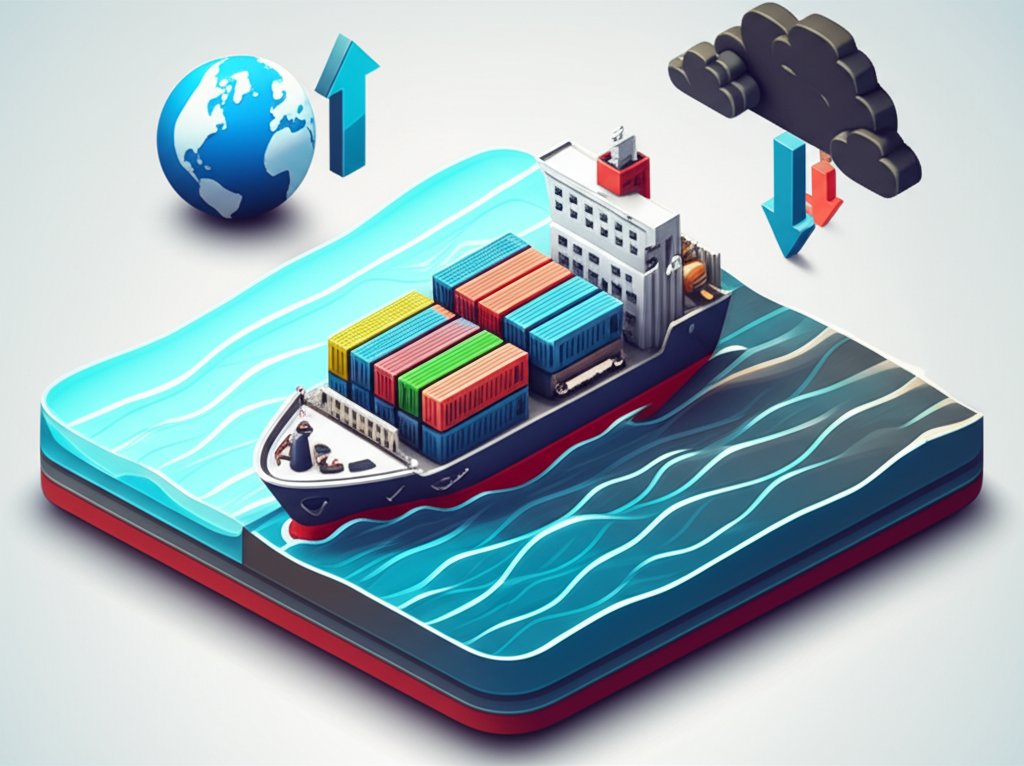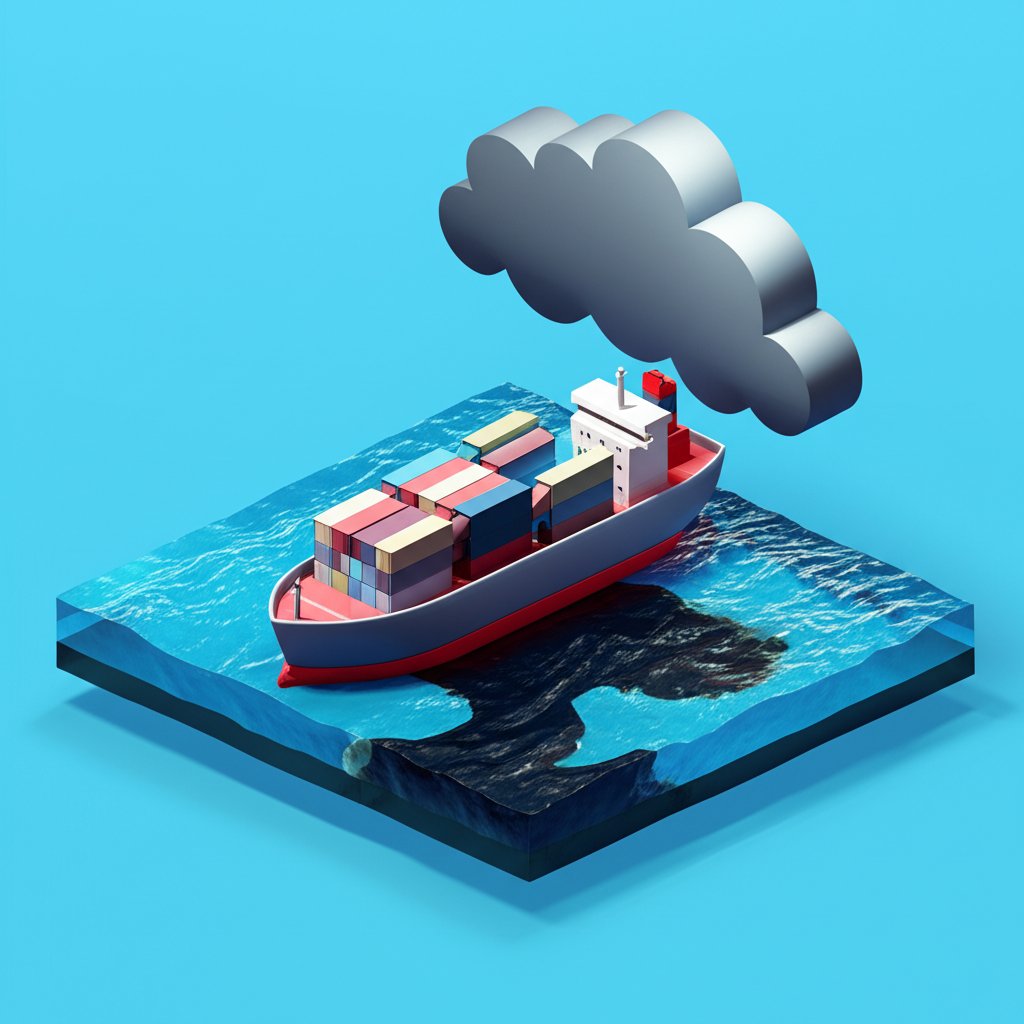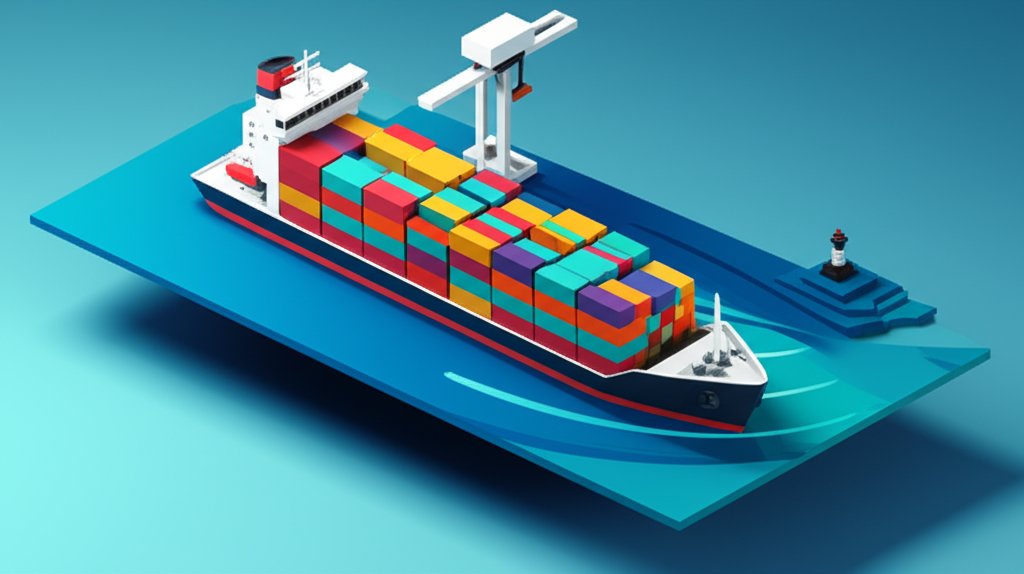Global commerce, the intricate web that connects nations and economies, owes its very existence to the efficient transportation of goods across vast distances. Among the various modes of transit, maritime transport stands as the undisputed leviathan, facilitating the movement of over 90% of the world’s trade. For businesses navigating international supply chains, understanding the nuances of this colossal industry is paramount. This comprehensive guide will meticulously explore the sea transport advantages and disadvantages, providing the expert insights necessary to make informed strategic decisions in this dynamic sector.
The Unrivaled Advantages of Maritime Transport: Why Businesses Choose the Sea

When evaluating options for global logistics, the compelling maritime transportation advantages often steer decision-makers towards the oceans. These benefits are particularly pronounced for enterprises dealing with high-volume, heavy, or specialized cargo, offering inherent efficiencies that other transport modes struggle to match.
Unbeatable Cost-Effectiveness for Bulk & Heavy Cargo
One of the most significant lures of maritime shipping is its remarkable cost-efficiency. Large cargo ships, by virtue of their sheer capacity, achieve unparalleled economies of scale. Transporting goods by sea generally incurs a lower cost per unit compared to air, road, or rail, especially over long distances. This economic advantage is critical for industries dealing with:
- Raw Materials: Commodities like crude oil, iron ore, coal, and grains are almost exclusively transported by sea due as their low value-to-weight ratio makes other transport modes prohibitive.
- Manufactured Goods in Bulk: From automotive parts to textiles, shipping containers allow for the consolidation of vast quantities, spreading container costs across numerous individual items.
- Project Cargo: Oversized or overweight items, such as industrial machinery components or wind turbine blades, are often too large for air or road transport, making sea freight the only viable and economical option.
The lower fuel consumption per ton-mile for large vessels contributes significantly to this cost-effectiveness, making it an attractive option for businesses looking to optimize their bottom line.
Massive Carrying Capacity: Moving Mountains of Goods
Modern cargo ships are engineering marvels, designed to carry astronomical volumes of freight. Container ships, for instance, can carry tens of thousands of TEUs (Twenty-foot Equivalent Units), while bulk carriers can hold hundreds of thousands of tons of dry bulk cargo. This colossal capacity offers several benefits:
- Consolidation: Businesses can ship enormous quantities in a single consignment, reducing the frequency of shipments and associated administrative overhead.
- Reduced Handling: Fewer loading and unloading points compared to multimodal land routes can minimize the risk of damage and pilferage.
- Global Supply Chain Backbone: Without this immense capacity, the globalization of production and consumption, as we know it, would be impossible.
This capability makes maritime transport indispensable for industries that generate or require large volumes of goods, ensuring a steady flow of materials and products across continents.
Environmental Superiority: A Greener Path for Global Trade
In an era of increasing environmental consciousness, maritime transport often stands out as a more sustainable option compared to air or road freight. Per ton-mile, large cargo vessels produce a significantly lower carbon footprint. While the industry faces its own environmental challenges, continuous advancements are being made:
- Fuel Efficiency: Modern ship designs, optimized routes, and slow steaming practices contribute to reduced fuel consumption, and consequently, lower emissions per unit of cargo.
- Alternative Fuels & Technologies: The International Maritime Organization (IMO) is driving initiatives for decarbonization, with the industry actively researching and implementing alternative fuels like LNG, methanol, and ammonia, alongside developing electric and hybrid propulsion systems.
- Air Quality Regulations: Stricter global regulations, such as the IMO 2020 sulfur cap, have reduced harmful sulfur oxide emissions, improving air quality in port areas.
Choosing sea freight aligns businesses with global sustainability goals, offering a tangible way to reduce their supply chain’s environmental impact.
Global Reach and Accessibility: Connecting Continents
Maritime transport boasts an unparalleled global network, connecting virtually every populated continent and major trading hub. With thousands of ports and established shipping routes spanning the globe, businesses gain:
- Worldwide Market Access: Importers and exporters can access markets and source materials from almost any corner of the world, fostering international trade and economic development.
- Remote Location Access: For regions inaccessible by other major transport modes, sea routes often provide the only viable connection to the global supply chain.
- Consistent Service: Major shipping lines offer regular schedules to a vast array of destinations, providing predictable (albeit slower) transit times.
This global accessibility is a cornerstone of international trade, enabling businesses to expand their reach and diversify their operations on a truly global scale.
Suitability for Diverse and Hazardous Cargo
Beyond standard containerized goods, maritime transport is uniquely suited for a wide array of specialized and even hazardous materials. Specialized vessels and stringent international regulations cater to these unique requirements:
- Hazardous Materials: Tankers for crude oil and chemicals, and vessels designed for dangerous goods, adhere to strict safety protocols (e.g., IMDG Code) minimizing risk during transit. This makes maritime the preferred, and often only, mode for such cargo.
- Liquid Bulk: From petroleum products to liquefied natural gas (LNG) and even fruit juices, specialized tankers safely transport vast quantities of liquid commodities.
- Break-Bulk Cargo: Goods that don’t fit into standard containers, like machinery, steel coils, or bagged cement, can be loaded individually onto general cargo vessels.
- Roll-on/Roll-off (RoRo): Vehicles (cars, trucks, construction equipment) can be driven directly onto and off specialized ships, simplifying handling and reducing damage risk.
This versatility underscores maritime transport’s critical role in industries with niche shipping requirements, offering tailored solutions for almost any type of freight.
Navigating the Challenges: Disadvantages of Sea Transportation
While the advantages of maritime transport are substantial, it is equally important for businesses to understand and plan for the inherent disadvantages of sea transportation. These drawbacks can impact delivery schedules, costs, and overall supply chain efficiency, demanding careful consideration and robust risk management strategies.
Extended Transit Times: The Pace of the Ocean
One of the most frequently cited downsides of maritime shipping is its relatively slow speed. Compared to air freight, which can deliver goods across continents in days, sea transport often takes weeks, or even months, depending on the route and number of transshipments.
- Speed Limitations: Even the fastest cargo ships operate at speeds far below aircraft or even modern rail.
- Port Calls & Delays: Vessels often visit multiple ports, adding time for loading, unloading, and customs clearance at each stop.
- Weather Impact: As discussed below, adverse weather can further prolong journeys.
For businesses operating with “Just-In-Time” (JIT) inventory systems or dealing with highly perishable goods, these extended transit times pose a significant challenge, requiring meticulous planning and forecasting.
Vulnerability to Weather and Environmental Factors
The open sea is a powerful and unpredictable environment, and maritime transport is inherently susceptible to its whims. Bad weather can have severe repercussions:
- Delays: Storms, high winds, fog, and rough seas can force ships to slow down, alter course, or even seek shelter, leading to significant delays.
- Cargo Damage: Severe weather can cause cargo to shift, containers to be lost overboard, or vessels to sustain damage, putting the integrity of goods at risk.
- Climate Change Impacts: Rising sea levels, more frequent extreme weather events, and melting polar ice caps (opening new but risky routes) present evolving challenges for route planning and port infrastructure.
Businesses must factor in buffer times and invest in robust cargo insurance to mitigate the financial impact of weather-related disruptions.
Security Risks: Piracy and Theft at Sea
While efforts to combat maritime crime have intensified, piracy and theft remain a persistent maritime shipping drawback in certain regions. High-risk areas, such as the Gulf of Aden, parts of West Africa, and Southeast Asian waters, continue to see incidents of hijacking, robbery, and kidnapping.
- Direct Threat: Piracy directly threatens crew safety, vessel integrity, and cargo.
- Increased Costs: Shipping lines incur additional costs for security measures, armed guards, re-routing, and higher insurance premiums, which are often passed on to shippers.
- Supply Chain Disruption: Incidents can lead to significant delays and loss of goods, impacting delivery schedules and customer satisfaction.
While rare for any single shipment, the catastrophic potential of such events necessitates careful route assessment and comprehensive insurance coverage.
Complex Regulatory Landscape and Documentation
International shipping is governed by a dense web of conventions, national laws, and port-specific regulations. Navigating this complexity can be a significant disadvantage of sea transportation for inexperienced shippers:
- International Conventions: Conventions like SOLAS (Safety of Life at Sea), MARPOL (Prevention of Pollution from Ships), and the Hague-Visby Rules or Hamburg Rules (governing carrier liability) impose strict requirements.
- Customs Procedures: Every country has unique import/export documentation and customs clearance processes, which can be time-consuming and prone to errors.
- Port Regulations: Individual ports may have specific rules regarding vessel entry, cargo handling, and environmental compliance.
- Legal Compliance: Ensuring compliance with diverse legal frameworks can be resource-intensive, often requiring specialized legal and logistic expertise.
Partnering with experienced freight forwarders and customs brokers is crucial to navigate these complexities efficiently and avoid costly delays or penalties.
Port Congestion and Infrastructure Limitations
Even once a vessel reaches its destination, challenges can persist at the port. Global port congestion and inadequate infrastructure are growing maritime transportation disadvantages, particularly in rapidly developing regions.
- Congestion: Surges in cargo volume, labor shortages, inefficient equipment, or unexpected disruptions can lead to vessels waiting for days or even weeks to dock and unload. This causes significant delays and can incur demurrage charges.
- Inefficient Handling: Slow processing times for customs, container handling, and onward transportation further exacerbate delays, creating bottlenecks in the supply chain.
- Inadequate Infrastructure: Some ports, especially in less developed areas, may lack the capacity, depth, or modern equipment to handle large container vessels or specialized cargo efficiently, limiting accessibility for larger ships and increasing turnaround times.
- Overland Logistics: The “last mile” or “first mile” of transportation often requires additional overland transport (truck or rail), adding to costs and transit time, particularly if the destination is far from a major port.
These operational hurdles can severely impact delivery schedules and add unexpected costs, eroding the cost-effectiveness initially gained.
Indirect Environmental Impact Beyond Emissions
While generally more carbon-efficient than other modes, maritime transport is not without other environmental consequences that go beyond direct emissions:
- Oil Spills: Accidents, though less frequent for large vessels now, can result in devastating oil spills with long-term ecological damage to marine ecosystems and coastal communities.
- Ballast Water Discharge: The practice of taking on and discharging ballast water (used for vessel stability) in different port environments can introduce non-native aquatic organisms and invasive species, disrupting local biodiversity and food webs.
- Noise Pollution: Underwater noise from large ships can interfere with marine mammal communication and migration patterns.
- Ship Scrapping: The disposal of old vessels, if not handled responsibly, can lead to pollution from hazardous materials.
The industry is continuously working on mitigating these impacts through stricter regulations (e.g., Ballast Water Management Convention) and technological innovations, but they remain critical considerations.
Strategic Considerations: When is Maritime Transport the Right Choice?
Navigating the advantages and disadvantages of sea transportation ultimately boils down to strategic decision-making tailored to a business’s unique needs. Understanding when to leverage maritime transport, and when to consider alternatives, is a hallmark of logistical expertise.
Cargo Characteristics and Volume
Maritime transport is unequivocally the best choice for:
- Heavy and Bulky Goods: Items that are too large or heavy for air or rail, or where the cost of air/rail transport would be prohibitive.
- Non-Perishable Goods: Products with a long shelf life that can withstand extended transit times.
- High Volume Shipments: When importing or exporting large quantities, consolidated sea freight offers unbeatable cost efficiencies.
Conversely, goods that are small, lightweight, and require rapid delivery are typically better suited for air freight.
Time Sensitivity and Supply Chain Strategy
Businesses must align their transport mode with their supply chain’s time sensitivity:
- Less Time-Sensitive: If lead times are flexible and inventory can be maintained without urgency, sea transport is ideal. This is common for seasonal goods manufactured well in advance or for staple products with stable demand.
- Strategic Buffering: Companies can strategically use sea freight by building in buffer stock or planning manufacturing cycles to accommodate longer transit times, thereby minimizing overall transport costs.
- Combined Modalities: For some routes or specific cargo, a combination of sea and rail/road (intermodal transport) can offer a balance of cost and speed.
For time-critical components or fashion items with short market windows, the speed of air freight often outweighs the higher cost.
Cost-Benefit Analysis and Risk Management
A thorough cost-benefit analysis is essential, weighing the lower per-unit cost of sea freight against potential extra costs like insurance, cargo handling, and the financial implications of delays.
- Total Landed Cost: Consider not just the freight rate, but also port charges, customs duties, insurance, and potential inventory holding costs due to longer transit.
- Risk Mitigation: Implement strategies for managing the disadvantages of sea transportation, such as comprehensive cargo insurance, choosing reputable carriers, and partnering with experienced logistics providers to navigate regulatory complexities and potential disruptions.
- Market Dynamics: Fluctuations in fuel prices, currency exchange rates, and global demand can affect basic freight rates, requiring ongoing monitoring.
By meticulously evaluating these factors, businesses can harness the immense power of maritime transport while effectively mitigating its challenges, ensuring a robust and cost-effective supply chain.
The Future of Maritime Transport: Innovation and Sustainability
The maritime industry is not static; it is undergoing a profound transformation driven by technological innovation and an urgent need for sustainability. Addressing the disadvantages of sea transportation and amplifying its advantages are at the forefront of this evolution.
Decarbonization and Alternative Fuels
The global commitment to reducing carbon emissions is reshaping the shipping landscape. The industry is investing heavily in:
- Zero-Emission Fuels: Research and development into hydrogen, ammonia, and full electric propulsion for shorter routes are gaining momentum.
- Energy Efficiency: Optimizing ship designs, propeller technology, weather routing, and engine performance are continuously improving fuel efficiency.
- Carbon Capture: Exploring onboard carbon capture technologies to reduce emissions from existing fleets.
These efforts are not just about compliance; they represent a fundamental shift towards a cleaner, more sustainable mode of global trade.
Digitalization and Smart Shipping
Technology is revolutionizing how ships are operated and how cargo is managed:
- IoT and Sensors: Real-time tracking of cargo and vessel performance, predictive maintenance to prevent breakdowns.
- Blockchain: Enhancing transparency and security in documentation, simplifying customs processes.
- Autonomous Vessels: While still in early stages, autonomous ships promise increased efficiency and safety, particularly for routine voyages.
- AI and Data Analytics: Optimizing routes, predicting port congestion, and improving supply chain visibility to overcome the disadvantages of sea transportation related to delays and unpredictability.
Digitalization offers the potential for greater efficiency, transparency, and resilience across the maritime supply chain.
Enhancing Resilience and Security
Learnings from past disruptions, from pandemics to geopolitical events, are driving a focus on strengthening the maritime sector:
- Supply Chain Diversification: Rethinking single-source dependencies and exploring alternative routes.
- Cybersecurity: Protecting increasingly digitalized systems from cyber threats.
- Enhanced Anti-Piracy Measures: Continued international cooperation and technological advancements to safeguard vessels and crew.
The future of maritime transport is one of continuous adaptation, embracing innovation to maintain its critical role in global commerce while navigating an increasingly complex world.
Conclusion
Maritime transport is an indispensable pillar of global trade, offering compelling sea transport advantages and disadvantages that demand strategic consideration. Its unparalleled cost-effectiveness for bulk cargo, massive carrying capacity, and relatively low environmental footprint per unit make it the preferred choice for the vast majority of international shipments. However, businesses must judiciously account for the disadvantages of sea transportation, including extended transit times, vulnerability to unpredictable weather, ongoing security risks, and the complexities of global regulations and port infrastructure.
By understanding the delicate balance between these pros and cons, and by leveraging expert partnerships and cutting-edge technologies, companies can master maritime logistics. The key lies in informed decision-making, meticulous planning, and a proactive approach to risk management, ensuring that the vast oceans continue to drive global prosperity forward.
FAQ

Q1: Why is maritime transport generally cheaper than other modes of transportation?
A1: Maritime transport is cost-effective primarily due to economies of scale. Large cargo vessels can carry enormous volumes of goods (hundreds of thousands of tons or thousands of containers) in a single journey. This allows the operational costs (fuel, crew, maintenance) to be spread across a much larger quantity of cargo, resulting in a significantly lower cost per unit of weight or volume compared to air, road, or rail transport.
Q2: What are the main disadvantages of sea freight?
A2: The main disadvantages of sea freight include longer transit times (weeks to months), vulnerability to weather conditions (leading to delays or cargo damage), potential security risks like piracy in certain regions, the complexity of international regulations and documentation, and the risk of port congestion and inadequate infrastructure at destination ports.
Q3: Is sea transport truly environmentally friendly?
A3: Per ton-mile, maritime transport generally has a lower carbon footprint compared to air or road transport, making it a more environmentally friendly option in terms of greenhouse gas emissions for large volumes. However, it also presents other environmental challenges, such as the potential for oil spills, the impact of ballast water on marine ecosystems (invasive species), and air pollution from sulfur and nitrogen oxides (though regulations are addressing this). The industry is actively investing in decarbonization and greener technologies.
Q4: How do businesses mitigate risks like piracy or weather delays in maritime transport?
A4: Businesses mitigate these risks through several strategies:
* Piracy: Choosing reputable carriers, utilizing secure shipping routes, employing enhanced vessel security measures (e.g., armed guards, razor wire), and comprehensive cargo insurance.
* Weather Delays: Factoring in buffer time for deliveries, subscribing to weather routing services, and robust cargo insurance to cover potential damage or financial losses from delays.
* General Risks: Partnering with experienced freight forwarders, maintaining strong communication with carriers, and diversifying supply chain routes where possible.
Q5: What types of goods are best suited for maritime transport?
A5: Maritime transport is best suited for heavy, bulky, and non-perishable goods that are not time-sensitive. This includes raw materials (e.g., iron ore, oil, grains), manufactured goods shipped in large quantities, oversized project cargo (e.g., industrial machinery), and hazardous materials requiring specialized vessels and stringent safety protocols.










